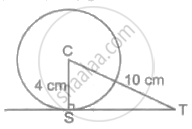Advertisements
Advertisements
प्रश्न
In the figure, given below, AD ⊥ BC.
Prove that: c2 = a2 + b2 - 2ax.
उत्तर
Pythagoras theorem states that in a right-angled triangle, the square on the hypotenuse is equal to the sum of the squares on the remaining two sides.
First, we consider the ΔABD and applying Pythagoras theorem we get,
AB2 = AD2 + BD2
c2 = h2 + ( a - x )2
h2 = c2 - ( a - x )2 ......(i)
First, we consider the ΔACD and applying Pythagoras theorem we get,
AC2 = AD2 + CD2
b2 = h2 + x2
h2 = b2 - x2 ......(ii)
From (i) and (ii) we get,
c2 - ( a - x )2 = b2 - x2
c2 - a2 - x2 + 2ax = b2 - x2
c2 = a2 + b2 - 2ax
Hence Proved.
APPEARS IN
संबंधित प्रश्न
Sides of triangle are given below. Determine it is a right triangle or not? In case of a right triangle, write the length of its hypotenuse. 13 cm, 12 cm, 5 cm
In Figure, ABD is a triangle right angled at A and AC ⊥ BD. Show that AD2 = BD × CD
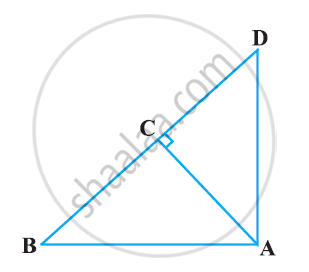
ABC is an equilateral triangle of side 2a. Find each of its altitudes.
A ladder 10 m long reaches a window 8 m above the ground. Find the distance of the foot of the ladder from base of the wall.
An aeroplane leaves an airport and flies due north at a speed of 1,000 km per hour. At the same time, another aeroplane leaves the same airport and flies due west at a speed of 1,200 km per hour. How far apart will be the two planes after `1 1/2` hours?
Find the side and perimeter of a square whose diagonal is 10 cm.
In ∆ABC, seg AD ⊥ seg BC, DB = 3CD.
Prove that: 2AB2 = 2AC2 + BC2
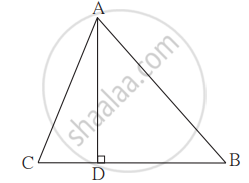
In right angle ΔABC, if ∠B = 90°, AB = 6, BC = 8, then find AC.
In an isosceles triangle ABC; AB = AC and D is the point on BC produced.
Prove that: AD2 = AC2 + BD.CD.
If P and Q are the points on side CA and CB respectively of ΔABC, right angled at C, prove that (AQ2 + BP2 ) = (AB2 + PQ2)
In ∆ ABC, AD ⊥ BC.
Prove that AC2 = AB2 +BC2 − 2BC x BD
In a triangle ABC right angled at C, P and Q are points of sides CA and CB respectively, which divide these sides the ratio 2 : 1.
Prove that: 9BP2 = 9BC2 + 4AC2
In a right-angled triangle PQR, right-angled at Q, S and T are points on PQ and QR respectively such as PT = SR = 13 cm, QT = 5 cm and PS = TR. Find the length of PQ and PS.
Determine whether the triangle whose lengths of sides are 3 cm, 4 cm, 5 cm is a right-angled triangle.
Find the unknown side in the following triangles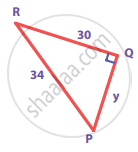
Find the unknown side in the following triangles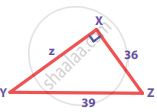
If S is a point on side PQ of a ΔPQR such that PS = QS = RS, then ______.
In ∆PQR, PD ⊥ QR such that D lies on QR. If PQ = a, PR = b, QD = c and DR = d, prove that (a + b)(a – b) = (c + d)(c – d).
In the adjoining figure, a tangent is drawn to a circle of radius 4 cm and centre C, at the point S. Find the length of the tangent ST, if CT = 10 cm.
